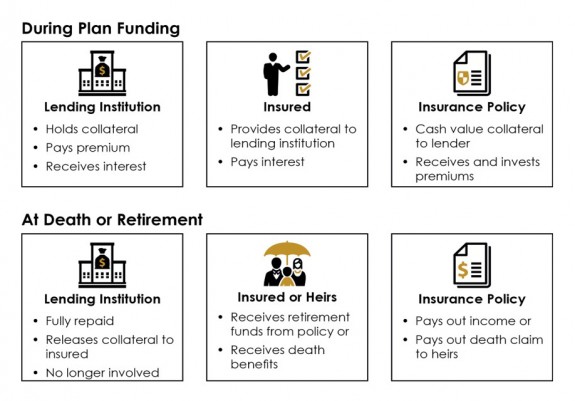Funding the Future with Leveraged Premium
Leveraged premium plans enable clients to leverage liquid assets to fund a life insurance policy. With a leveraged premium financing arrangement, the insured (or the insured’s trust or corporation) takes out a loan from a lender to pay the premiums on a life insurance policy. Here are a few benefits of leveraged premium plans:
- Funds are loaned, not earned. Leveraged plans reduce liquidity needs. This is helpful if your assets are not readily convertible to cash or are committed to other investments or expenses.
- You have an insurance need but current assets are employed in investments with returns that are higher than the cost of borrowing.
Leveraged premium plans have many uses, including:
- Retirement income planning
- Prefunding of a corporate buyout
- Estate maximization
- Estate Tax Replacement
- Legacy Planning
- Corporate liquidation value replacement
- Estate liquidity
- Corporate benefit planning
Here’s how leverage premium plans work:


Tax Considerations
- Interest on a loan to acquire life insurance is generally
considered personal interest and not tax deductible. - Since loans to a trust for premium payments are not taxable gifts, gift taxes can be minimized.
- Estate maximization
- Providing a personal guarantee or collateral on a loan does not cause an incident of ownership in the policy.
- If a policy can be structured inside of an irrevocable life insurance trust (ILIT), the policy and proceeds can be excluded from your estate value.









